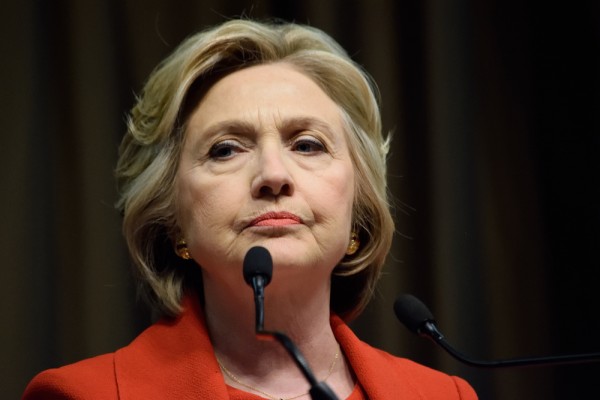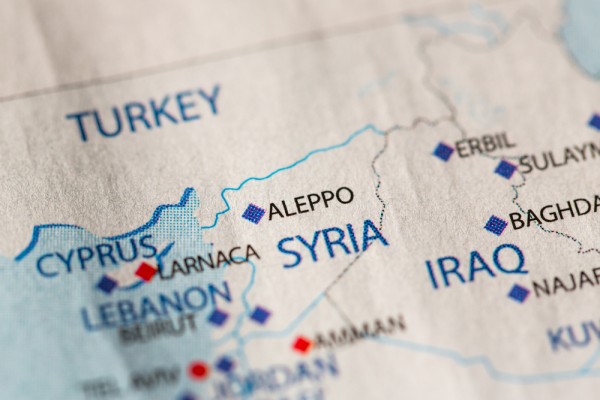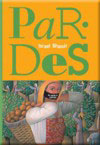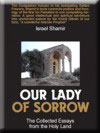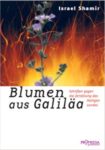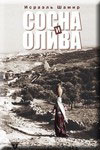
I am a big fan of President Trump’s Christmas greetings. We need a US president to wish Merry Christmas in this dark time. And by declaring his troops’ withdrawal from Syria, he almost earned the right to do it.
Do not forget: the anti-Christian wave that covered the world had began in the US. In this great country, Christmas had been outlawed; only Hanukkah lights were allowed in public spaces, while Christian signs and images of Bethlehem Manger had been forbidden.
Enemies of Christ and enemies of American people promoted some previously unheard-of Kwanza, as if the black Americans weren’t Christians but some pagans straight from African jungle. Truth must be said, the US blacks were known and famous for their spirituals, for their steady church attendance, for their love of Christ. So many troubles, criminality, drugs and degradation this community suffered because Christ’s enemies’ drive to de-Christianise them and the whole of American society. People are often unfair to the blacks: at first, they encouraged them to turn away from the church, and then, they blamed them for the consequent depredation.
They encouraged celebration of Hanukkah, the Jewish feast commemorating mass murder of … Jews who embraced Western culture and assimilated, by their fundamentalist and West-hating brethren. In a recent article, an American Jewish journalist admitted that he is revolted by the story and by the events, but he still celebrates it because he hates Christianity and does not want to give an inch in his struggle against Christ.
I refer to The Hypocrisy of Hanukkah by Michael David Lukas who has been planning to abandon the Jewish feast, but he decided not to do so because he needs something to offer his young daughter who is attracted to Santa Claus. As he puts it, “it’s all about beating Santa.”
“Santa” is an euphemism for Christ. He accepts Hanukkah he dislikes because he hates Christ even more. And one of the usual tricks is to say that Christ could not be born now, in the darkest time of the year, and it is just secondary use of some pagan practice. Their opponents say that Jesus could be born anytime, so by chance it occurred in late December.
But it is not by chance Christ was born in Judea, a day after the winter solstice, the darkest time of the year. It is not by chance He was born in the family of Palestinian refugees from Galilee, driven by the army to the caves at the edge of the desert.
The Son of Man could be born anywhere on earth, and He would be received with great glory. Instead, he chose the darkest time and the darkest place, and the lowest position there is. He came as light comes to where and when it was most needed.
His birth in Palestine is sometimes interpreted as a sign of special election of the people he was born amongst. The Jews were chosen as worthy to give birth to Christ, so preach Evangelical Zionists in their drive to support Israel. Another Zionist outlet, Jews for Jesus, try to appropriate Christ as their coreligionist and a fellow Jew, a Saviour for the Jews. A whole PR industry promotes an idea of Jesus as a Jewish Rabbi, and of the necessity for Christians to give tribute to Jews.
But it is possible to read the story in a different light: Jesus chose to be born in the darkest time, in the darkest place, among people possessed by the darkest ideas. The Jewish paradigm of that time (as now) was a system of double morals, of mutual support combined with disregard for outsiders, of inward love and outward enmity. Christ chose to be born here as He knew: this idea is the most dangerous that mankind faces, and it has to be taken on.
The tradition tells, after His death, He descended to the netherworld and saved the souls of the just. It is called Harrowing Hell, and a visual presentation of this deed can be found in many churches, for instance, in the small apse of the St Saviour monastery of Chora in Constantinople/Istanbul. His birth in Herodian Judea under Pharisee control was a prefiguration of His descent to Hell. He came to the worst place and saved the souls of the just, even of Adam and Eve. A short three hundred years after His birth, His idea of the brotherhood of man had won the day. Alas, the forces of darkness were not totally defeated.
This idea of supremacy, of inequality, of being good to your kin and awful to the rest, is again the biggest danger mankind faces now, two thousand years later, when the world has made a complete circle and came back to the same place. Bethlehem again bewails its innocents; a newer, better-equipped version of King Herod rules in Jerusalem; the doctrine of double morality again spans the earth and captures the great empires.
Still, one finds hope the day after the solstice: the darkest time is already behind us. Be merry!
Yuletide Controversy
Christmas greetings are supposed to be pretty non-controversial stuff, but not anymore. The date of Nativity caused a heated dispute among my friends and readers. Lane, from Miami wrote, “it was my understanding that the actual time of Christ’s birth was in September”. Shanaz from Saudi Arabia was of a different mind: ‘Jesus was born in April; check it out’. Prof John Williams from Virginia explained: ‘You may be aware that most historians believe that Jesus must have been born in September, under the sign of the Virgin. The Church moved his “official birthday” to just after the shortest day of the year in order to emphasize that he was the Light of the World’. And Bryce from Atlanta offered another date: “most scholars will agree that Jesus was born in mid-late October (a kindred Libran)”.
Such variety of proposed dates, and all of them ‘actual’, and agreed by ‘most experts’! Is it a meaningful controversy? Well, up to a point. There isn’t and can’t be any new historical knowledge about the Nativity that was not available to, say, St Jerome of Bethlehem or Eusebius of Caesarea. As centuries and millennia pass by, we do not learn more about these times, we just forget. People of Bethlehem are not likely to remember the particulars of the birth of a humble refugee from Galilee. The church decided on the date on the basis of the best data available at the time. The persons who decided were men of great faith, curiosity, desire to establish true facts, and I see no reason to doubt their decision.
Could the Church move his birthday in order to emphasize that he was the Light of the World? Before replying to this question, I shall quote an amusing booklet published in the second half of the 19th century under the title Napoleon as a Solar Myth. The author ‘proves’, tongue-in-cheek, that Napoleon never existed, but was just a new version of the Solar Myth, and his 12 marshals were, yes, you guessed it, twelve months or signs of Zodiac. In the same vein, one could argue that Sabbatai Zevi, the great Jewish prophet of the 17th century, was an invention, as he was born and died on the 9th day of Ab, the day of the Destruction of the Temple. Many other important men were born on auspicious dates. Why would not Christ be born on such a day?
Doubt of the Nativity date obscures a greater doubt, the doubt of divinity, doubt of predestination, doubt of God’s existence. If God exists, and if He arranged for the Star to announce the coming of Christ, is it strange that Christ would be born on a day of great importance to all mankind? No, it would be logical. The birth of the Son of God was a cosmic event, and it would be expected to happen on a special day. As He was the Light of the World, He was born after the winter solstice. Even more important, the darkest time of the year hints to the darkest place on earth. Jerusalem was the focal point of the system of double morals, of inward love and outward enmity. Christ chose to be born here as He felt: this idea is the most dangerous that mankind faces, and it has to be taken on.
This connection is overlooked by the Evangelical Zionists, who misunderstand His birth in Palestine as a sign of special election of the people He was born amongst. The Jews were chosen as worthy to give birth to Christ, they preach. One could think Christ was born in purple. The date is especially relevant as it confirms what we know: He was born in the Heart of the Darkness.
If you doubt Christ, then it makes sense to doubt the cosmically significant date of Nativity. And then you can find yourself on a wrong side of the frontline that goes through New York and Bethlehem, as the struggle is far from over.
The Washington Times (28.11.01) published an interesting article called ‘Calendars for Advent appear more secularised’. A newspaper reporter visited a few bookshops in the US, from Barnes and Noble to Borders, and found that the Advent calendars had dropped the Nativity. There are mice, bunnies, Santa Claus, bears, the ‘Nutcracker’, but no Bethlehem, no Nativity. ‘The stores do not want to offend any non-Christian shoppers’, speculates an interviewee.
Who are those ‘non-Christians’? Surely not Muslims, who commemorate the Nativity of Christ as much as anybody, and who are anyway disfavoured in the US. There are not too many Neo-Pagans, either. So, why could they not write in a less-oblique way, ‘the shop owners feel the Jews do not want to see anything connected to Christ’? Probably because it would be a painful truth.
The Orthodox Jews have even a special routine for Christmas. The preferred activities are cutting toilet paper for the forthcoming month and suchlike, reported the local Jerusalem newspaper Kol Ha-Ir. Non-religious Jews have forgotten the reason why, but still keep fighting Christ and Christianity.
Forward[1], the most progressive Jewish American newspaper, dedicated a long article to Jewish Christmas customs. It refers to ‘the traditional Eastern European Jewish custom of playing cards on Christmas Eve’ and explains it: ‘The most precious commandment for religious Jews is learning Torah…. The only time Jews would not learn was at times of personal or communal mourning — and on Nitlnacht. There would be no learning to bring honour and merit to the one that was born on that night (i.e. to Jesus Christ)’.
Jews would not say ‘Christmas’. “Punning derogatorily in different languages on Christian words for this holiday, it turns out, was indeed a time-honoured (!) Jewish practice. For instance, Nitlnacht (a pun on nit, nothing, or on Hebrew nitleh, “the hanged one,”), Kratzmakh, (a made-up Yiddish word that sounds like “Scratch-me”), Taluy-nakht, “the night of the hanged man”, blinde nakht, “Blind Night” (a pun based on the Ukrainian, in which sviatyi vechir, “sacred evening,” was turned by Jews into slipyi vechir, “blind evening”), Khvoristvo (a pun on Ukrainian rizdvo, “Christmas,” and Belorussian khvori, “sick.”). “Some Yiddish speakers in Western Poland called Christmas beyz-geboyrenish, “Badly Born,” playing on Polish Boze Narodzenie, “Divine Birth.”
The Forward concludes: “It’s clear, I think, why Christmas should have inspired so many Jewish puns. It was a day that Jews had an instinctive distaste for, it being the holiday on which Christians celebrated the incarnation of God in human form of all Christian beliefs, the one to strike the Jewish mind as the most absurd and repugnant.” Repugnant, no less!
The Washington Times quotes Patrick Scully of the Catholic League: ‘We witness neutering of Christmas … Christmas suffered a direct hit from this secularisation. One is allowed to see symbolism in Kwanza, while a Nativity scene may mean a battle with the (heavily Jewish) ACLU’. As the Christians of the US prefer to avoid battle with the ACLU, Israelis can battle the besieged Bethlehem with greater ease, but who can say, which front of this battle is the more important one?
The American Jewish Committee, the ADL and other major Jewish supremacist organizations have worked relentlessly to forbid the singing of Christmas carols in schools and public institutions. They have made sure that Nativity scenes and Christian symbols are removed from community property, but they have worked for and even received court approval for Jewish Menorahs on public property.
Take for instance a recent ADL guide for Jewish parents in their campaign against Christmas in public schools, called: Religious Issues in Your Child’s Public School: A Guide for Jewish Parents, available on the ADL Website.
Q. What is excessive when it comes to Christmas decorations on handouts and in the classroom?
A. First, it is important to note that while Christmas trees, Santas, wreaths, wrapped gifts, and reindeer are commonly used as Christmas decorations or symbols, the courts have decided that they are secular symbols of the season. Nevertheless, their inordinate usage is inappropriate. Talk to the teacher about the plethora of Christmas decorations on the homework assignments. Explain that while you understand that displaying such graphics on workbook assignments is legal, such excessive use makes you and your child feel uncomfortable. Suggest alternative winter decorations, including snow flakes, gingerbread houses, and mittens that may be more inclusive.
Q. Is it appropriate for teachers to hold Christmas parties and to allow those who don’t observe to be excused?
A. The students are being told, in effect, “Come to a fun party with gifts, food, and games, or go to the library for the afternoon”. While legal, this party is insensitive to those students who do not celebrate Christmas. With a few adjustments, this party can be a positive experience for all of the students. Instead of celebrating Christmas, the party can celebrate the winter season or a variety of holidays. Finally, since receiving gifts from Santa Claus is a Christian tradition, it is inappropriate in the public-school classroom”.
Attempts to sow doubts about Christ are regularly made by some Jewish scholars, who usually try to downgrade Him. If he existed, they claim, he surely was just an ordinary bloke, a vagrant teacher from Galilee, who was born anywhere but in Bethlehem, anytime but on an auspicious date, and grew up anywhere but in Nazareth. If he existed he surely did not care about Goyim, non-Jews, they say. Why indeed would a good Jewish Rabbi care about the rest of mankind? (This is the underlying idea of the book of Hiyam Maccobi, for instance, where the Jewish nationalist writer claims Christ was a Jewish extreme nationalist, a Rabbi Kahane of his day). For Jewish scholars, media-owners, opinion-makers, the fight against Christ was and remains an important part of the agenda, and denial of Nativity is a weapon in this struggle. It is not the only weapon, and I shall give you an example.
The Washington Post printed in its last Easter edition on the first page (not far from its usual glorification of Israel) a feature called ‘The Face of Christ’, containing a police-style e-fit. It showed a rather crude and brutish face of a man, with low forehead, darkish skin, eyes expressive of cunning, a type of lowly menial laborer. It bore the caption, ‘Face of Christ’. Bold headlines advised the reader that now the latest tools of science were used in order to find out how Jesus Christ looked, on the basis of some skulls found in Jerusalem. Well, 90 p.c. of the readership does not go beyond the bold headlines, into the fine print, and they would come away with the feeling that in fact, the skull of Jesus was discovered, and he turned out to be quite an unpleasant fellow.
Only careful perusal of the feature article reveals that the face is a reconstruction of a Jewish contemporary of Christ, based on a few skulls found in Palestine. The authors could call the brutish e-fit, ‘The High Priest of Jews’. They could remain neutral and unbiased and call the e-fit ‘a face of a Jewish (?) contemporary of Christ’, but they preferred the misleading legend ‘Face of Christ’, with its implication that Christ actually looked like a low criminal.
With absolutely the same license, they could make a composite photo of a few women from the local old folks’ home and publish it as ‘the face of Marilyn Monroe’. But then, this newspaper has its own agenda. On this agenda, fighting Christ has higher priority than debunking Marilyn Monroe. And this newspaper does not stand alone, but i liaises with other media outlets all over the US, Canada, England. The picture of ‘the face of Christ’ appeared in all of them, and afterwards, probably, in every major newspaper, as who would miss such a sensation?
The struggle against Christianity and Christ is the raison d’être of Judaism, as Christ symbolises the end of Jewish chosen-ness. We are truly blessed that nowadays, the Jewish war against Christ is expressed just in the siege of Bethlehem and a ban on Christ in ‘Christmas’.
December 2002-2018
Our Lady of Sorrow (Free PDF)
The Collected Essays from the Holy Land
Israel Shamir
Send any appropriate PayPal payments to israel.shamir@gmail.com
Notes
[1] JANUARY 10, 2003




